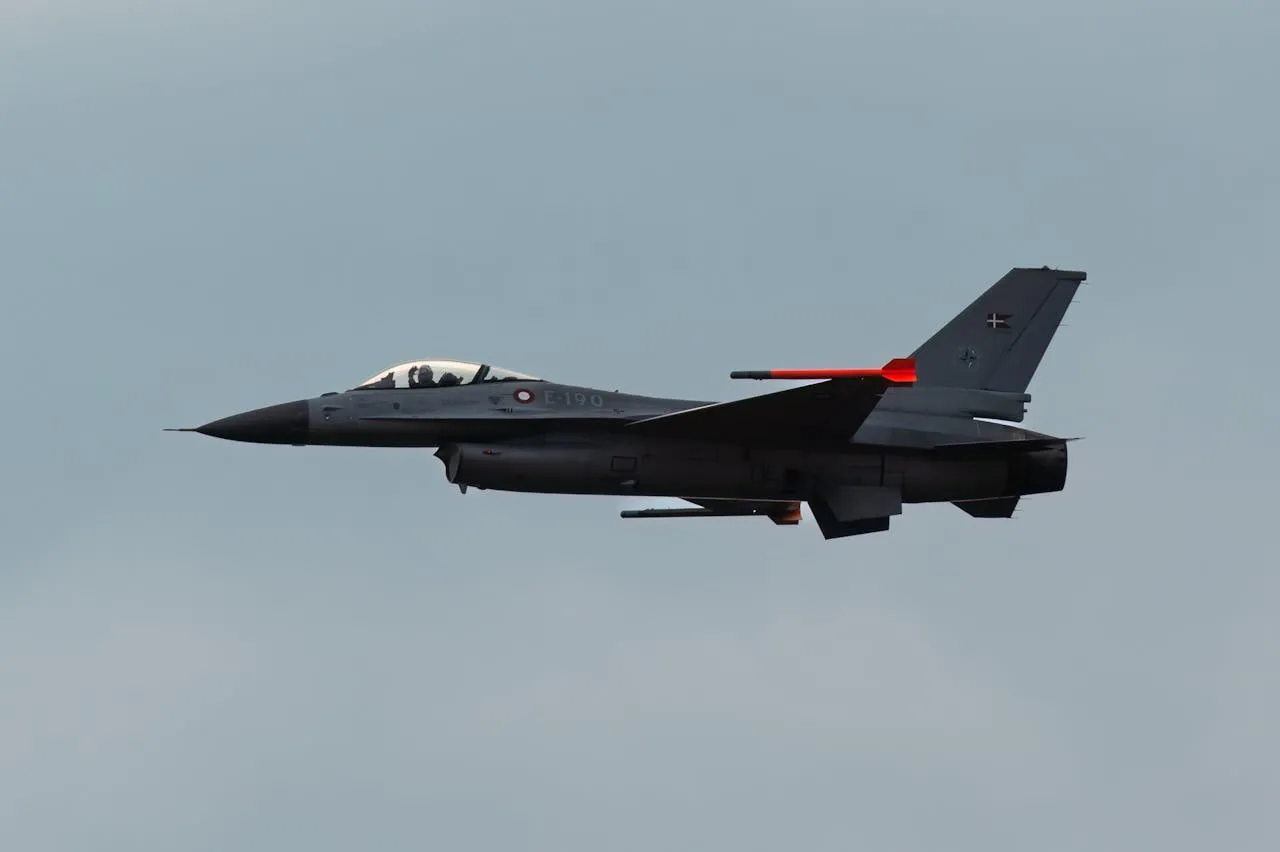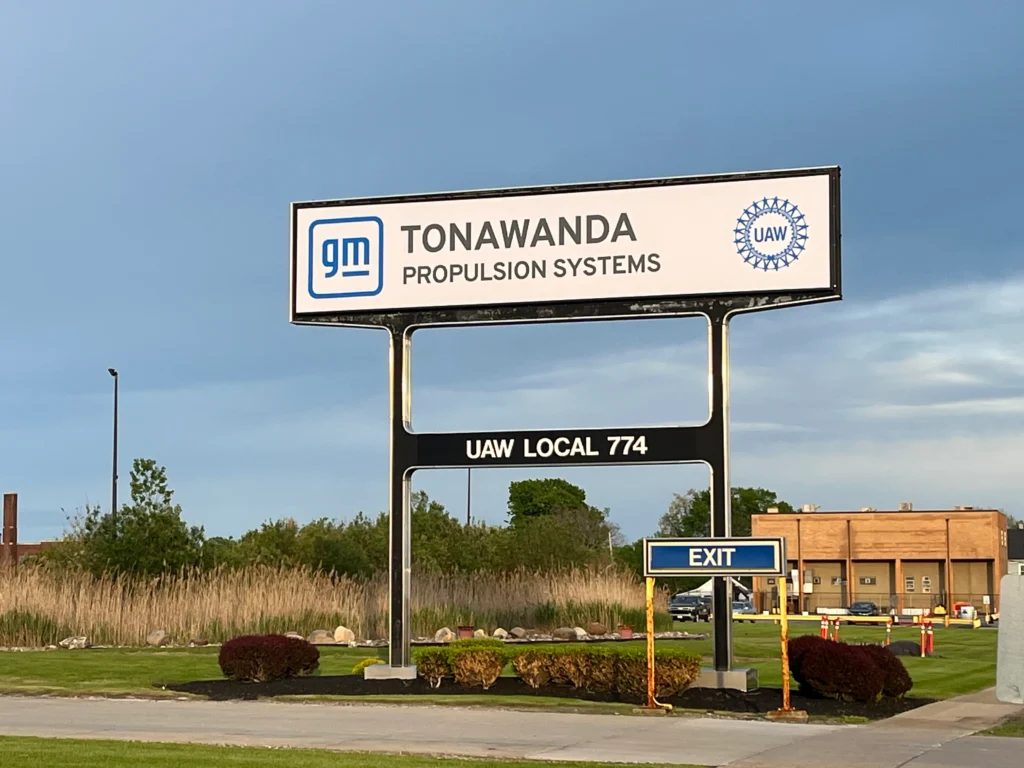
Tonawanda Propulsion: 90 Years of Engine Innovation, Legacy, and People Power
Nestled on the eastern banks of the Niagara River in Buffalo, New York, the Tonawanda Propulsion plant has been a cornerstone of General Motors’ powertrain operations for nearly a century. With an 87-year history of manufacturing engines that have powered everything from World War II fighter planes to modern Corvette sports cars, Tonawanda is not just an industrial facility—it is a monument to American engineering, ingenuity, and workforce dedication.
“This plant is 87 years old and an icon in the western New York region,” says Tara Wasik, regional plant director overseeing both the Tonawanda and St. Catharines Propulsion plants. “Having spent 26 years of my career here, I feel a deep sense of pride in what this place has contributed—not just to GM, but to American industry and the people of this community.”
Spanning over 3.1 million square feet and covering a 190-acre campus, Tonawanda has evolved through the decades in lockstep with the American automotive and defense industries. It began with a humble mission: assembling six-cylinder engines and axle assemblies for Chevrolet vehicles. But from these modest beginnings, it has grown into a powerhouse of propulsion technology and a symbol of multi-generational craftsmanship.
A Timeline of Power and Purpose
1937–1938: Foundations of a Legacy
The story of Tonawanda begins in 1937 when General Motors broke ground on what was originally named the “Chevrolet Motor and Axle Plant.” Officially opening in 1938, the plant quickly established itself as a vital cog in GM’s production network, building inline six-cylinder engines and axles to support the explosive growth of the Chevrolet brand during the pre-war automotive boom.
1941–1945: War Demands and National Duty
When World War II engulfed the globe, Tonawanda, like many American manufacturing facilities, pivoted to meet the needs of the nation. Civilian car production was halted in early 1942, and the plant was transformed into a wartime production hub, contributing directly to the Allied effort.
Tonawanda shifted its focus to building 14- and 18-cylinder Pratt & Whitney aircraft engines, which would go on to power legendary aircraft like the P-61 Black Widow Night Fighter, the B-24 Liberator bomber, and the P-47 Thunderbolt fighter. At the height of its wartime activity, the plant built more than 64,000 aircraft engines.
A new 750,000-square-foot aviation engine facility was constructed on-site to meet demand, operated by Chevrolet but owned by the federal government. By 1943, Tonawanda was responsible for producing a remarkable 10% of all U.S.-built aircraft engines, underscoring the plant’s critical importance to the war effort.
1945–1958: The Jet Age and Automotive Boom

After the war, Tonawanda transitioned back to civilian manufacturing and, in 1959, began producing engines for Chevrolet’s groundbreaking Corvair—GM’s first air-cooled, rear-engine vehicle. The plant’s Aviation Engine Facility, now repurposed and purchased from the government, was instrumental in producing engines for this new generation of consumer vehicles.
By the 1960s, Tonawanda was operating six production lines that assembled 16 different engine models, including small-block and big-block V-8s, inline sixes and fours, and flat-six configurations. The plant built more than 9.1 million engines during the decade—a testament to both its capacity and the growing demand for American-made cars.
1970–1989: Innovation and Expansion
As demand grew through the 1970s and 1980s, Tonawanda continued to expand. In 1971, GM acquired a new building designated “Plant No. 5,” significantly increasing production space. In 1975, Tonawanda introduced a limited-production four-cylinder engine—hand-assembled by a single operator, marking a U.S. industry first and emphasizing craftsmanship.
The plant was also home to the introduction of Chevrolet’s first V-6 engine, a milestone that further diversified GM’s propulsion portfolio.
By the late 1980s, Tonawanda had cemented its status as a high-output facility. In June 1988, the plant set a world record by producing 8,832 engines in a single day. The momentum of success set the stage for significant investments in the decades to come.
1990–1999: A New Identity and Strategic Growth
In 1990, GM officially renamed the facility “General Motors Powertrain,” marking a strategic shift in branding and operations to emphasize advanced engine technologies and global competitiveness.
Key milestones during this decade included:
- A $37 million investment in 1991 to support next-generation V-6 engine production.
- Recognition in 1992 as GM’s most productive engine plant by Harbour & Associates.
- A $121 million expansion announced in 1993, creating 585 new jobs.
- A 1995 production record of 1.92 million engines in one year.
- A 1997 commitment to produce the L850 World Engine for the Saturn brand.
These achievements reflected not only corporate confidence but also the enduring capability of Tonawanda’s workforce.
2000–2019: Engineering for the New Millennium
Tonawanda entered the 21st century with continued momentum. In 2000, GM announced a $500 million investment to build new inline 4- and 5-cylinder engines, part of a broader initiative to modernize the facility’s capabilities. This period also saw launches of the 3.5L and 3.9L V-6 engines in 2003, and later, the 2.0L and 2.5L 4-cylinder engines in 2012. In 2014, the plant began production of the Gen V small-block engine.
In total, GM invested $2.9 billion into Tonawanda between 2000 and 2019. The commitment underscored Tonawanda’s role as an essential pillar of GM’s North American manufacturing strategy.
2020–Present: A New Name and Renewed Purpose
In 2024, GM renamed the facility once again—this time to Tonawanda Propulsion Systems. The new name reflects not just the plant’s focus on internal combustion engines, but its growing relevance in the transition toward advanced propulsion technologies.
Today, the plant builds engines for a wide array of vehicles under GM’s Cadillac, Chevrolet, GMC, and Buick brands. Among its current crown jewels is the 6.2L LT2 Small Block V8 that powers the iconic Corvette Stingray and the hybrid Corvette E-Ray. This summer, the plant is poised to celebrate a monumental milestone: its 77 millionth engine built.
But for all its machinery, Tonawanda’s true legacy lies in its people.
Generations of Talent and Tradition
“My family has been part of Tonawanda for as long as the plant has existed—from my great-grandfather who built aircraft engines during World War II, to my grandfather and dad who built Chevy Big Block engines for the muscle cars of the ‘60s and ‘70s,” says John Kehoe, a senior manufacturing engineer and fourth-generation Tonawanda employee. “Now I work as the lead engineer on the line building the engine that goes into today’s Corvette Stingray. It’s such a great feeling.”
This sense of generational pride is not unique. Tonawanda has become a multi-generational employer for countless families in western New York. With deep community ties and a culture that blends technical excellence with local loyalty, the plant has created a lineage of legacy workers committed to quality and innovation.
While the automotive industry pivots toward electrification, Tonawanda continues to evolve. As GM’s propulsion strategy adapts to encompass both electric and hybrid systems, facilities like Tonawanda remain key to supporting a broad spectrum of vehicle needs—including performance, durability, and reliability.
From fighter jets and bomber engines in the 1940s to the powerhouse V-8s driving today’s most sophisticated sports cars, Tonawanda Propulsion Systems has proven its ability to adapt, lead, and deliver for nearly a century. And with nearly 90 years behind it, the plant is poised to keep building the future—one engine at a time.




